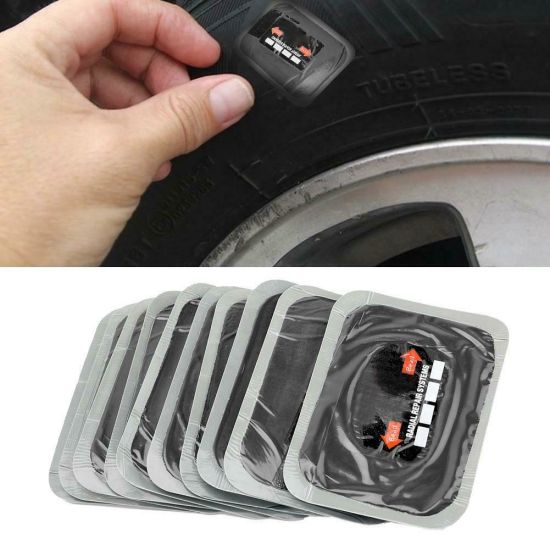One of the problems you can encounter when traveling by car is a punctured tire. Using a patch is a fairly common option to work around this issue.
Yet, if the hole is in a position like a tire wall, the problem becomes much more complicated because it is likely that the defensive position will not be patched.
So, how close to the sidewall can a tire be patched? A distance of 6 mm or more from the tire shoulder is required to fit a patch. In other words, if a crack is closer than 6mm, there’s almost nothing you can do about it!
Tire Sidewall OverviewFirst, let’s learn about sidewalls and how to identify them on your tires.
The wall is the rubber part from the outer edge of the rim to the road surface. This part also has the largest area, is the most flexible, and continuously deforms under loads when moving.
How Close To Sidewall Can A Tire Be Patched?As you know, the car’s wall is in a particular location, so it is pretty challenging to troubleshoot the hole here.
Manufacturers also recommend that you not choose the patch option if the spot is on the side of the vehicle or too close to this position. Then, how close to the sidewall can a tire be patched.
You cannot use the patch if the hole is close to the wheel with a gap of less than 6mm. In addition, you should note that if the hole is more significant than ¼ inch, the patch should not be used. In this case, if the patch is small, it cannot cover the hole, causing the wheel to deflate still when moving.
On the contrary, using a large patch can make the wheel more bulky, difficult to move, and unsafe.
Fix Sidewall DamageOther Related QuestionsTo better understand the problems that occur with the tires and how to overcome them effectively, you can refer to the following information.
We’ve put together some frequently asked questions that may help answer your questions on this topic.
Plug a flat tire: Is it possible?People are often concerned about whether it is safe to plug or patch a flat tire.
These two options are pretty standard in repairing or overcoming the problem of flat tires caused by rolling nails or other sharp objects.
The manufacturer still recommends that you better replace the tire with a new one when there is a problem because repairing with a plug or patch when a flat one is not a safe solution.
Yet, the cost of new tires is not cheap, and if you have this problem often, it is a big problem. So, many drivers use a plug or patch when a wheel is punctured.
There is a limit to the number of nails or patches on a product. You can use this option to temporarily fix the problem if you find a few small holes. If the wheel has many large holes or previous patches, it is best to replace it with a new one.
For a detailed guide, check out this video:
How close can a tire patch be to another patch?The gap between patches is also a topic that people are very interested in. When traveling on the road, you may encounter a flat one many times.
As you know, when the tires have had previous patches or punctures in close locations, it is better to replace them. In case
Can you patch a tire on the side of the road?In the case of a puncture on the tire side, the use of stickers is unlikely to have as much effect as you think.
The reason is that its wall adhesion is so thin that relatively few materials can adhere.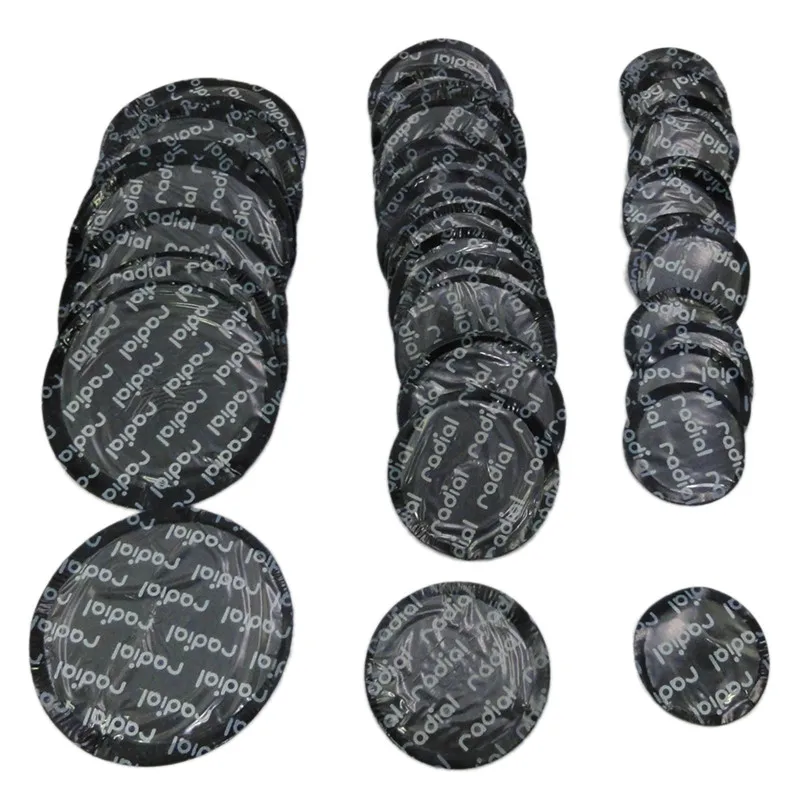 More specifically, damage to the sidewall will seriously damage the structure of a wheel.
More specifically, damage to the sidewall will seriously damage the structure of a wheel.
The solution to this problem is to insert an extra tube inside the wheel to ensure that you can still turn the whole thing.
How fast can you drive on a patched tire?A patched one will not achieve the same speed and performance as it once was. Therefore, the optimal level you can expect from such a version will not be more than 85 mph. Of course, this is just the limit that many manufacturers recommend, but you should not overdo this limit.
Can you patch a tire with 2 nails in it?The answer is yes! It’s just that the gap between the two punctures is at least 16 inches, and you might seal them with two large patches.
According to many manufacturers, the maximum number of times performed is two times. If more than that, it’s time to get a new one.
ConclusionAs such, a puncture in the side of the vehicle is a unique location where patching is not an optimal solution in this case. It would help if you changed to a new tire to ensure safety when traveling.
It would help if you changed to a new tire to ensure safety when traveling.
Thank you for following this post!
This post was last updated onBy John Goreham G+ Jun 29 2020 - 11:03am
Many vehicle owners feel frustrated when they have a nail in the tire and are told by a tire shop that the tire cannot be repaired. Here are a few common reasons why it can’t be fixed.
Advertisement
You just either rolled up to a tire shop on a flat, were towed in, or drove in with your spare on the car and the flat in the trunk. You have important things to do today, and since you can clearly see there is a nail in the tread, you expect to be told that the nail can be pulled out and the tire fixed quickly. However, after a quick glance, the tire shop says, “No can do, Bubba.” They are not just trying to sell you a new tire.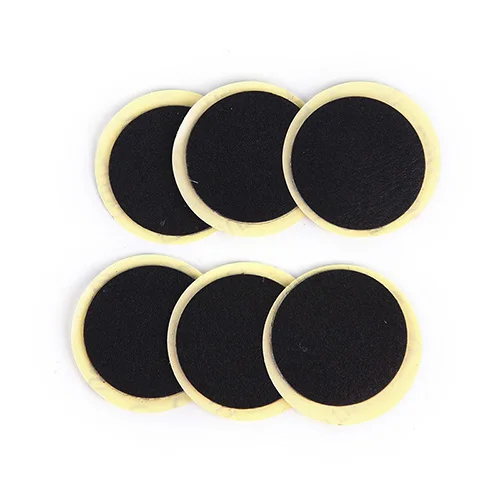 There are real reasons why many flats cannot simply be patched.
There are real reasons why many flats cannot simply be patched.
Reason 1 Why Your Tire Cannot Be Repaired – You Drove On The Flat
Modern tires have an inner structure of the sidewall that is not designed to support your vehicle when uninflated. You can usually get away with a flat tire rolling without air for a short distance – think yards, not miles. However, if you just drove 10 minutes on the flat, you destroyed that important sidewall structure and the tire cannot be repaired.
Related Story: Tire Shortages and Delays: Not Just For Tesla Owners Anymore
Reason 2 Why Your Tire Cannot Be Repaired – Your Puncture Is In The No Repair Zone
Modern tires also need to be puncture-free along the sides and in from the sides about 20% on both sides of the tire. If your puncture is near the sidewall you are out of luck. Tire shops need to keep customers safe, and they follow the standard industry guidelines and will not repair a puncture too close to either sidewall.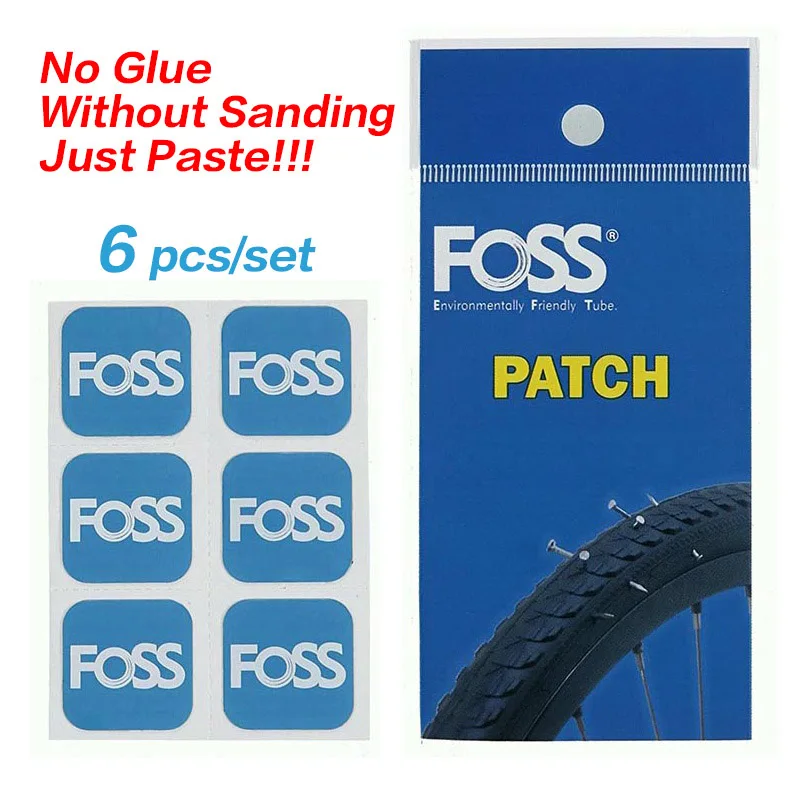 They should err on the side of caution to protect your safety and protect themselves from liabiility. Most do.
They should err on the side of caution to protect your safety and protect themselves from liabiility. Most do.
Reason 3 Why Your Tire Cannot Be Repaired – Your Tire Has Other Issues
If you have a bubble, a tear, or a big honking carbuncle on the side of your tire, it is unrepairable. Even if that is NOT why your tire went flat. If you have any area of the tire worn beyond the tread wear indicators, your tire is not repairable. If your tire is older than the internet, your tire is not repairable. If your tire is unevenly worn and any of the metal parts inside are visible your tire is not repairable. We can keep going. Basically, if your tire was not safe before the puncture, your tire shop would be crazy to try to repair the puncture. According to NHTSA, hundreds of people are killed each year due to tire failure. Your tire shop does not want you to be killed due to tire failure with the receipt for the repair sitting in the cupholder.
Reason 4 Your Tire Cannot Be Repaired - You Have Run Flat Tires
Many shops will not repair a run-flat tire that has had a puncture.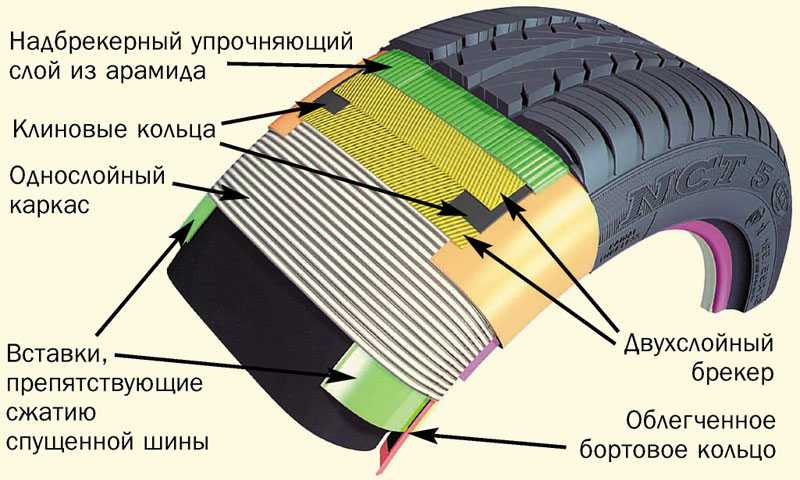 Although run-flats are designed to get you to a shop or home when you have a puncture, they may not have been designed to then be repaired and continue in service after having been driven when deflated. This is one reason we give run-flat tires like those on BMW vehicles a thumbs-down.
Although run-flats are designed to get you to a shop or home when you have a puncture, they may not have been designed to then be repaired and continue in service after having been driven when deflated. This is one reason we give run-flat tires like those on BMW vehicles a thumbs-down.
Reason 5 Your Tire Cannot Be Repaired - The Puncture Is Too Large
If the puncture in your tire isn't just a normal nail or screw, but rather a chunk of metal, your repair shop will tell you to buy a new tire. Sometimes the metal bruises or gouges the tire either inside or outside and the plug and patch method of repair is simply not safe to perform.
Reason 6 Why Your Tire Cannot be Repaired - It Was Struck By A Meteorite
We recently had a puncture that we surmised was a meteorite strike. Yes, it sounds crazy, but read our story and tell us if you have a better guess.
Take care of your tires and they will take care of you. If you have a tire-repair story to tell, feel free to offer it up in the comments below.
John Goreham is a life-long car nut and recovering engineer. John's focus areas are technology, safety, and green vehicles. In the 1990s, he was part of a team that built a solar-electric vehicle from scratch. His was the role of battery thermal control designer. For 20 years he applied his engineering and sales talents in the high tech world and published numerous articles in technical journals such as Chemical Processing Magazine. In 2008 he retired from that career to chase his dream of being an auto writer. In addition to Torque News, John's work has appeared in print in dozens of American newspapers and he provides reviews to many vehicle shopping sites. You can follow John on Twitter, and view his credentials at Linkedin
Images by John Goreham. Use with permission only.
Automotive News
News Opinion
Toyota News, Pricing and Reviews
Follow Torque News on YouTube, Twitter and Facebook.
Tesla Semi, Cybertruck Are Few of Several Cars To Feature a 1000-Volt Powertrain
The Famous Tesla Semi Driving 500 Miles, Fully Loaded, on a Single Charge
More Recent Videos
Author: Kirill Savchenko
“Chief, you've got ten minutes of work to do, the hole is nothing! Well, come up with something .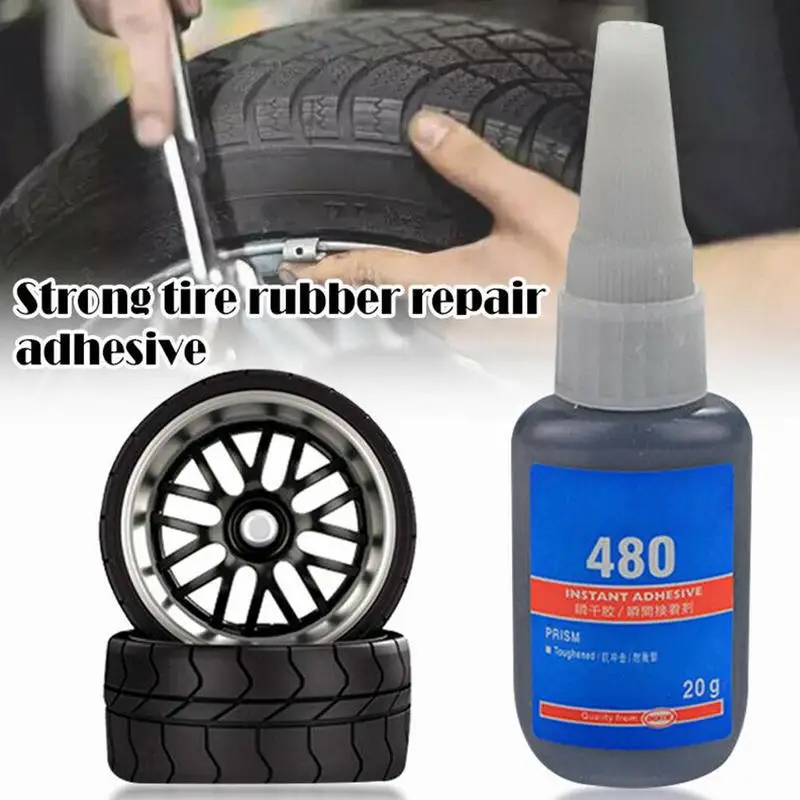 .. ”Every tire fitter has probably heard such words. Alas, not all tire damage can be repaired ...
.. ”Every tire fitter has probably heard such words. Alas, not all tire damage can be repaired ...
But the situation can be reversed. A wheel pierced by protruding reinforcement may be repairable, while a small cut will write off the tire for scrap. Experienced tire fitters believe that it all depends on the point of damage and the object that caused it.
Most often, drivers encounter punctures in the tread area of a tire. It is not always possible to detect it immediately. If in the days of tires and chambers the wheel lost pressure at the slightest puncture, then tubeless tires are much more reliable in this regard. A nail or self-tapping screw usually closes the puncture site, preventing air from escaping quickly.
With such a "plug" you can sometimes drive for months. The tire can lose pressure minimally without arousing suspicion. At the same time, an attempt to pull out a noticed nail on the way is likely to turn into a problem. In this case, the only recommendation is to pull out a foreign object only in a tire shop and repair the wheel.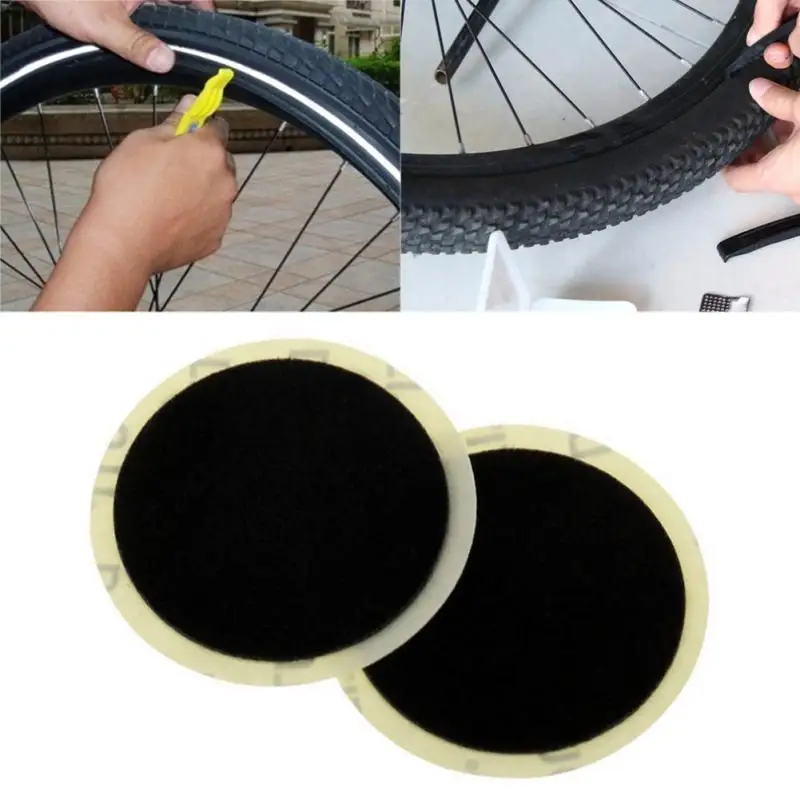
In most cases, tread punctures are sealed either with special harnesses (some for temporary use, some for permanent use) or patches from the inside of the tire. Even damage caused by massive pins can be repaired. The main thing is that a piece of the tire along with the cord is not torn out.
In the latter case, the hole is filled with raw rubber, vulcanized, and a special cord patch is placed on the inside. But this will only be a temporary measure. In addition, such repairs are not cheap, and purchasing a new tire can be both more profitable and safer.
In addition to the plaster, cord “fungi” are also used. Lubricated with glue, the “fungus” is inserted into the puncture from the inside of the tire, then the excess part of the “leg” is cut off from the outside.
On the other hand, a cord patch can seriously help with side cuts. And car owners meet with them quite often. But here there are several nuances. In a roadside tire shop, the cut will most likely not heal.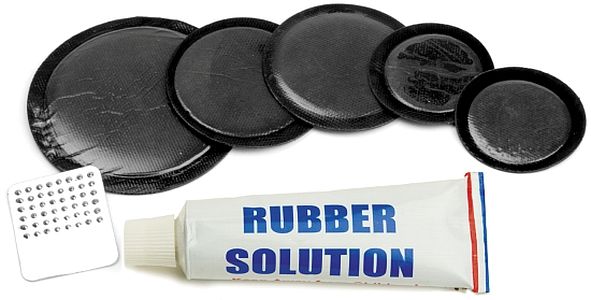 You need to contact a company with specialized equipment, primarily vulcanization.
You need to contact a company with specialized equipment, primarily vulcanization.
And one vulcanizer is not enough here. Cord patches should be with a certain number of layers, designed for strictly defined damage sites and of a suitable size. And again we are talking about the nuances.
If the cut is in the shoulder area of the tire, then it is often impossible to repair it properly. The tire fitter who offered such a service is at great risk, even if he claims that he will weave a piece of new cord with his hands and vulcanize it. There are no miracles in this situation, but in any case, the last word belongs to an experienced specialist.
Low-profile tires with a tread height of less than 50% of the width are difficult to heal side cuts. That is why, in the case of using a car on roads with a possibility of tire damage, it is better to put those that are higher. They are much easier and cheaper to repair.
By the way, what appears to be a cut at first glance may not be one.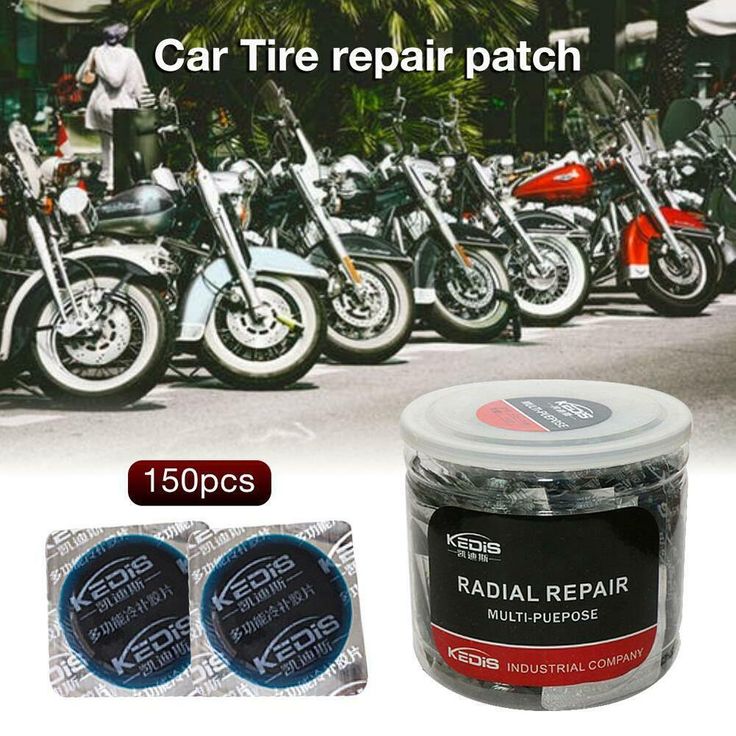 If the sidewall of the wheel catches on something sharp, and a tear forms on the tire without damaging the cord, then this is called a pinch. It does not carry momentary danger and does not require any complex repairs.
If the sidewall of the wheel catches on something sharp, and a tear forms on the tire without damaging the cord, then this is called a pinch. It does not carry momentary danger and does not require any complex repairs.
However, if a piece of rubber remains, then it is glued with ordinary superglue. If not, you will need raw rubber and a vulcanizer. It is impossible to leave the cord bare: under the influence of moisture, it can collapse, which will lead to the complete loss of the tire.
One of the most common and fatal tire defects is swelling or simply "herniation". Despite the absence of open damage to the rubber, such a wheel will be scrapped ahead of schedule. The fact is that when the sidewall is hit, the threads of the tire carcass break. Even if the swelling is very small, sooner or later the bump grows in size, and this is already fraught with an explosion of the wheel at speed.
However, some hernias can be repaired, but this is again a temporary measure.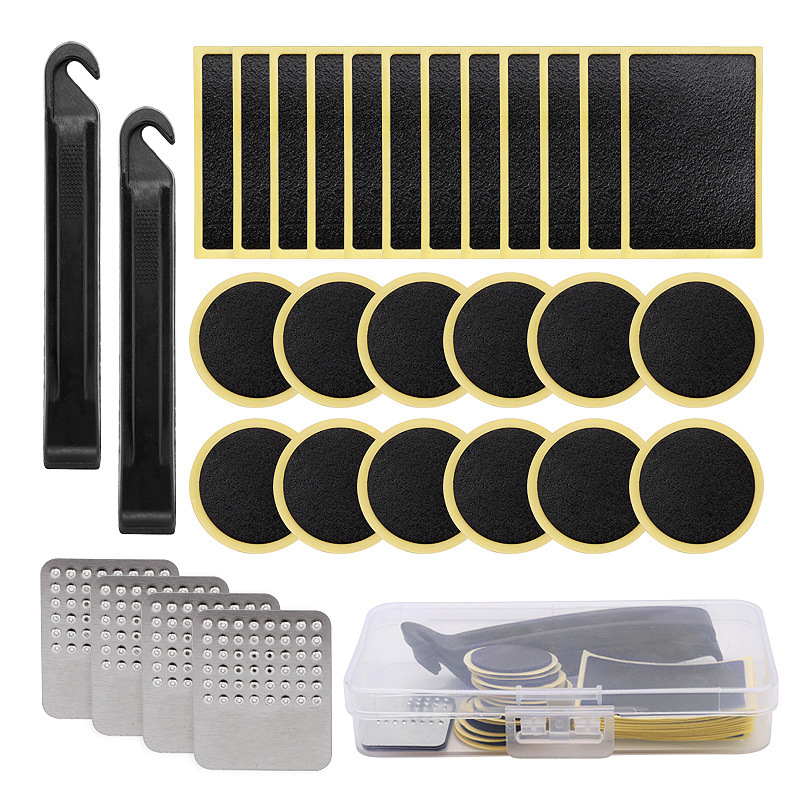 Masters can put cord patches even in the tread area. But only on condition that the distance from the sidewall to the swelling is more than 40 mm. If less, the tire is not subject to further operation. By the way, on low-profile tires, hernias, for the most part, are not repairable - both on the tread and on the sidewalls.
Masters can put cord patches even in the tread area. But only on condition that the distance from the sidewall to the swelling is more than 40 mm. If less, the tire is not subject to further operation. By the way, on low-profile tires, hernias, for the most part, are not repairable - both on the tread and on the sidewalls.
One of the major tire problems is caused by unprofessional repairs. Moreover, the owner most often does not know about it. We are talking about damage to the bead ring, as a result of which the tire does not initially hold the specified pressure.
Eventually the bead ring begins to push out of the rim. At high speed or under heavy load, such a wheel can be disassembled, which again threatens the car with a loss of control.
This damage can be repaired provided that the wire ring or base is not damaged. Special technologies for such repairs are not provided, but experienced craftsmen use the so-called "cold" or chemical vulcanization using a two-component sealant. The resulting mass covers places where there is no rubber on the bead ring. The main condition is to wait three days before mounting the tire on the disc.
The resulting mass covers places where there is no rubber on the bead ring. The main condition is to wait three days before mounting the tire on the disc.
As for Run Flat tires, according to the instructions of most manufacturers, they are not subject to repair. In extreme cases, you can use a bottle of special pressurized sealant that comes as a repair kit.
Comment of the expert of the company "SHINSERVICE":
Alexander Golubev
expert "SHINSERVICE"
First of all, we recall that most tire manufacturers do not recognize handicraft tire repair. It is considered a sign of external influence and changes in the design of the tire. Such a tire automatically voids the warranty. This does not happen if tire repairs are carried out in specialized, authorized tire brands services. Note that almost all major tire brands give their own extended warranty, according to which in most cases the repair is free, at a discount, or the product is generally replaced with a similar one, depending on the conditions of the program.
Based on our experience, we can note that in most cases damage in the bead area and in the shoulder area is not repairable.
I would also like to draw attention to the fact that most low-profile tires have high speed indexes (V and above), and even after professional repair they will not be able to be used in the previous modes without restrictions. Therefore, we strongly recommend changing the tire in all cases, except for tread punctures.
practice tires and wheels
Articles / Travel 3500 km from Moscow. Visiting Khanty and Mansi. We continue to follow our pilgrims, Alesei Zhirukhin and Sergei Lysenko. In this part of the report, they will tell us about Khanty-Mansiysk and Kogalym. 142 0 0 05.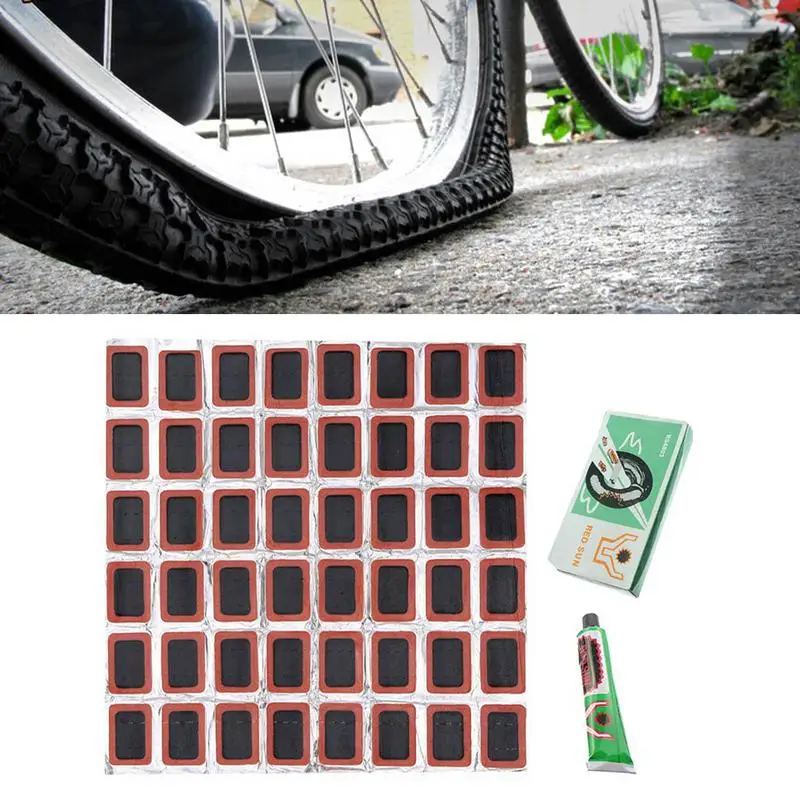 12.2022
12.2022
Articles / Popular questions What is dangerous driving and is it possible to get a fine for it Just a couple of weeks ago, we figured out that traffic rules limit lane changes not only for dangerous driving. Today we will talk directly about the most dangerous driving. What mane... 154 0 one 05.12.2022
Articles / History A 45-year-long holiday: we see off the Ford Fiesta, remembering its brightest achievements Fiesta for Ford is almost the same iconic model as, for example, Golf for Volkswagen. After all, for more than 45 years, more than 16 million copies of seven generations have been produced. Alas,... 1402 four one 03. 12.2022
12.2022
Test drives / Test drive Haval Dargo vs Mitsubishi Outlander: the dog is barking, the stranger is coming In the Haval dealership in the south of Moscow, life is in full swing: buyers look at cars, communicate with managers and sign some papers. While I was waiting for the test Dargo, the same cross... 18168 7 205 13.09.2022
Test drives / Test drive Motor from Mercedes, emblem from Renault, assembly from Dacia: test drive of the European Logan 1.0 It would seem that what's new can be told about the second generation Renault Logan, known to every Russian taxi driver, as they say, up and down? However, this car has.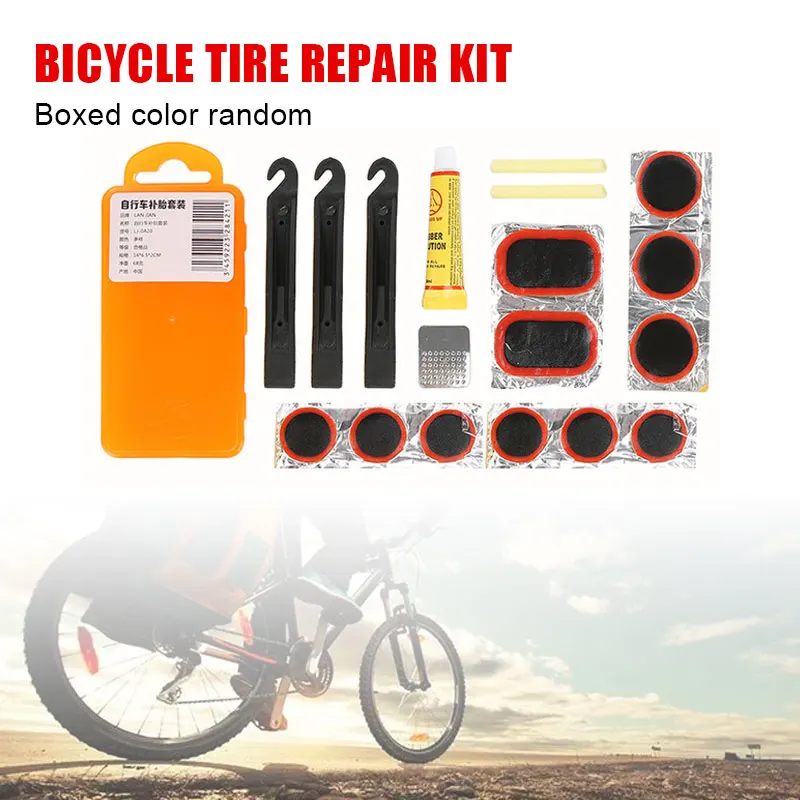 .. 14575 ten 41 08/13/2022
.. 14575 ten 41 08/13/2022
Test drives / Test drive Geely Coolray vs Haval Jolion: Free Cheese? If! Do you want to buy a car today with a full warranty, on credit at an adequate rate, without wild dealer markups? Now this is still a task, because a full-fledged chain of "representation - s... 11800 26 thirty 08/10/2022
1. Background
2. Repair patches
3. Fungus
4. Bundles
5. Raw rubber
damage. It would seem that modern technology could save motorists from this problem, but this did not happen.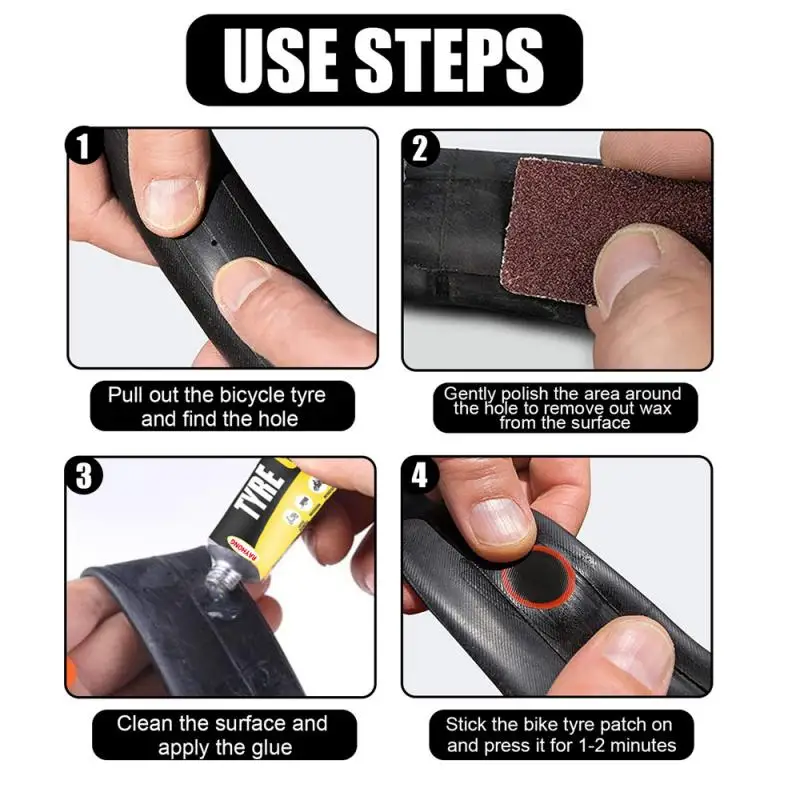 Of course, the strength of tires increases with time, but the requirements that are placed on them - optimal grip, high strength and relatively low weight contradict each other in many ways. Therefore, when designing tires, manufacturers one way or another have to compromise.
Of course, the strength of tires increases with time, but the requirements that are placed on them - optimal grip, high strength and relatively low weight contradict each other in many ways. Therefore, when designing tires, manufacturers one way or another have to compromise.
Along with the development of design ideas in the production and design of tires, the technologies for their repair were also improved. In the 1970s, for the first time, uniform standards were formed that regulated tire repair methods. Tire damage classifiers and recommendations for the use of materials to eliminate them have appeared. The principles laid down then are still the basis of modern tire fitting techniques. Around the same time, cold vulcanizing tire repairs are becoming mainstream, and tire repair manufacturers are flooding the market with affordable and reliable patches.
Manufacturers of tires and tire repair materials now provide detailed worksheets that describe and regulate the use of certain materials for the repair of specific tire damage. Therefore, with a proper approach to work, it is possible to guarantee high-quality repair of the tire, which will ensure its further safe use.
Therefore, with a proper approach to work, it is possible to guarantee high-quality repair of the tire, which will ensure its further safe use.
Modern tire repair materials allow retreading of tires in 70% of cases, and the cost of repairs, as a rule, does not exceed 10% of the cost of a new tyre. To repair tires, harnesses, fungi and various types of patches are used, raw rubber is less commonly used. Below we describe in detail about each of these materials for tire repair.
Types of tire repair materials:
Use patches to repair tire damage such as cuts and punctures. Breakdown is called damage with a diameter of more than 6 - 8 mm with the destruction of the cord and / or carcass of the tire. One of the tasks of repair is the restoration of damaged tire cords. Therefore, when applying a patch, its cord threads are placed in the same direction as those damaged in the tire. Repair patches are available for both diagonal and radial tires. Now the most common are radial ones, so we’ll tell you more about patches for them.
Now the most common are radial ones, so we’ll tell you more about patches for them.
A) Universal and multi-purpose patches These patches can be used to repair any part of the tire that needs to be repaired. The design of universal patches is based on a particularly strong cord made of viscose and polyester, which is laid in layers (from 1 to 4 layers), separated by rubber, and in large patches up to 8 layers. Universal patches are relatively thin, so they do not significantly increase the stiffness of the tire at the repair site, while they provide high quality and reliable repair of radial tires. The disadvantages of universal patches include increased elasticity, which can cause swelling during the repair of the side of the tire. It is these patches that are most often used as a material for tire repair.
B) Steel Cord Patches Steel cord patch has increased reliability.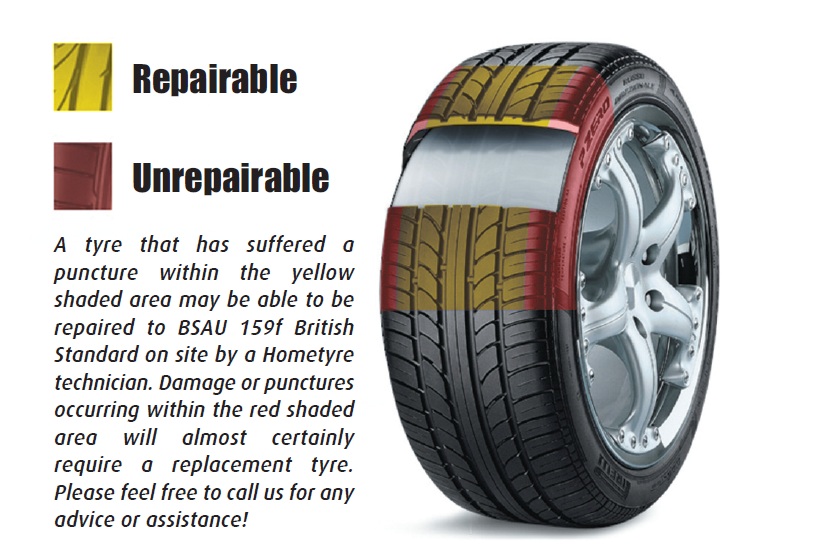 There are only 1-2 layers of steel cord in the construction. Quality patches of this type additionally have a textile layer. The disadvantage of such patches is low flexibility and high weight.
There are only 1-2 layers of steel cord in the construction. Quality patches of this type additionally have a textile layer. The disadvantage of such patches is low flexibility and high weight.
C) Aramid cord patches Aramid cord patches are used for the same damage as steel cord patches. However, aramid cord is much lighter, thinner and more elastic than steel cord, while at the same time it has even greater strength. This allows them to be used in the repair of low-profile rubber. The disadvantage of such patches can be called a high cost.
D) Cross-belt patch Cord of such patches is made of high-quality polyester or nylon, which is laid in several layers. These patches have excellent flexibility and reliability comparable to steel and aromide cord patches.
Structurally, Mushrooms consist of a stem and cap and are made of high strength elastic rubber. Fungi are designed to repair tubeless radial and diagonal tires of cars and trucks in the tread area, in the shoulder and side areas. Used to repair minor damage. When repairing with a fungus, its leg tightly fills the puncture, so the hole in the tire should be 2-3 mm smaller than the diameter of the fungus leg.
Used to repair minor damage. When repairing with a fungus, its leg tightly fills the puncture, so the hole in the tire should be 2-3 mm smaller than the diameter of the fungus leg.
Mushroom 8 mm uni-seal ultra (universal)
The cap and stem of the fungus are coated with a special layer for cold vulcanization, which ensures the connection of the fungus and tire at the molecular level. Fungi provide a more reliable repair of small punctures than tourniquets and universal patches.
Tows are used to seal small punctures in all types of tubeless tires in the tread area and in the shoulder area. Often they are combined with patches to fill a puncture. Repair of the side area of tires with harnesses is not allowed. An exception may be TECH PERMACURE harnesses.
Butyl Tows
Manufacturers claim that repairing a tire with a tow is a temporary measure. This is due to the fact that when moisture gets on the tourniquet, its adhesive impregnation is gradually washed out and the puncture site is depressurized.